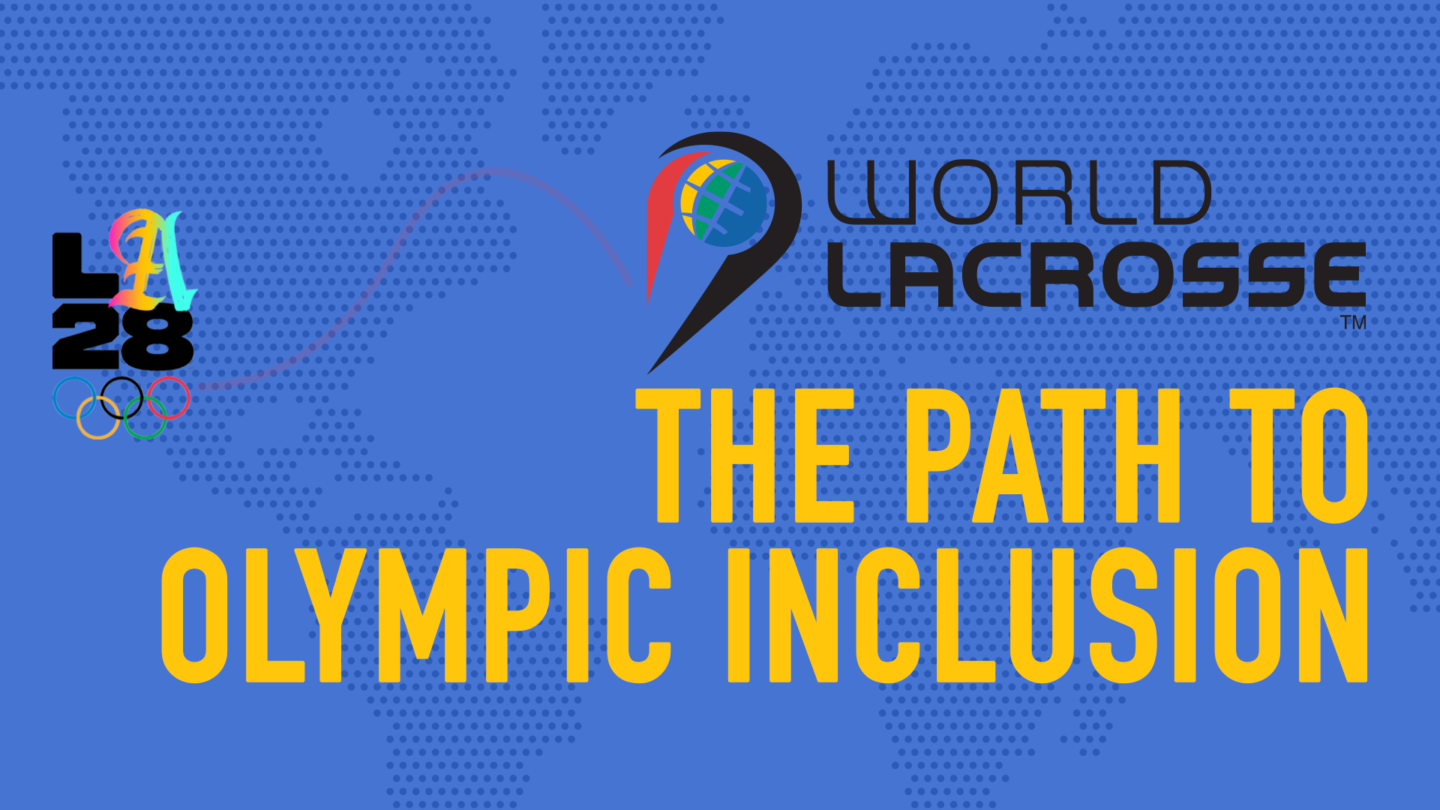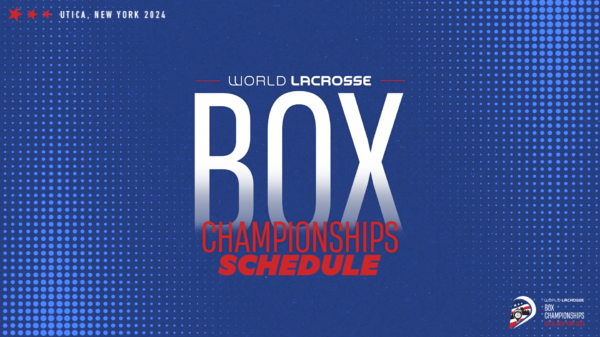In 2005, the two organizations governing men’s and women’s lacrosse globally – the International Lacrosse Federation and the International Federation of Women’s Lacrosse Associations – each came to the independent conclusion that lacrosse should aim to return to the Olympics.
Lacrosse is nearly a thousand years old, developed by Native Americans and first noticed by French Missionaries in the 1630s. In addition to North America, the sport began spreading internationally – particularly across the United Kingdom and Australia – by the late 1800s and was officially contested in two editions of the Olympic Games (1904 and 1908). Lacrosse was subsequently a demonstration sport in the Olympics in 1928, 1932 and 1948.
Almost 60 years later, the first step on the long road back to the Olympics was to merge the two organizations.
“Our rationale was if we were going to achieve what we wanted for our sport – increased growth, interest and a fanbase – the Olympics was the best way to do that,” said Sue Redfern, current president of World Lacrosse and vice president of the IFWLA from 2001 to 2008. “We knew, even back in 2005, that we were looking at a likely 30-year road to achieving our lofty goal.”
It took three years, but after separate votes among each organization’s member contingent, the two merged into the Federation of International Lacrosse in 2008.

The merger allowed lacrosse to proceed on the road to inclusion as a united front with a driving principle. From there, the challenge was to meet the International Olympic Committee’s standards for new sports.
The FIL was included in the Global Association of International Sports Federations in 2012 (now SportAccord) and recognized by the International World Games Association in 2013. In 2017, women’s field lacrosse was competed in The World Games, marking a key appearance in a multi-sport event for the first time since the 1948 Olympics.
“It was an important step to boost our exposure and have elevated publicity at multi-sport games,” said Redfern.
The federation then hired Jim Scherr as its first employee in 2017. Scherr had served as the CEO of USA Wrestling, the United States Olympic & Paralympic Committee and the European Games. His experience in navigating the Olympic process was paramount in helping the federation pursue its goal through a critical stage of the journey.
One of the first things carried out by the organization’s first CEO was a rebrand to World Lacrosse.
“Our rebranding was a transformative moment. It allowed us to reintroduce ourselves to the IOC and the Olympic family, presenting a fresh and dynamic image of lacrosse,” said Scherr. The newly branded federation made a splash at the 2019 SportAccord conference, one of the foremost gatherings of international sport leaders, with a prominent booth that reinforced the sport’s intentions.
“We had a real presence at SportAccord, and I believe conference attendees went away thinking, ‘Wow, lacrosse is serious about getting in,” said Redfern. “Being a part of these sport organizations was not necessarily a pre-requisite to Olympic inclusion, but we understood how important it was for us to contribute to and be a partner of the global sports community.”

The memorable presence at SportAccord came on the heels of a significant development in 2018, when lacrosse became provisionally recognized by the IOC. It was acknowledgment of the organization’s significant growth and commitment to aligning with values and practices of the Olympic Movement.

World Lacrosse continued to grow in time as an organization with a full-time staff and a dedicated board. The federation was also able to secure funding that exponentially increased the budget, allowing for proper governance, oversight and commitment to the Olympic process.
“We’ve been absolutely consistent at the board and staff level on being singularly focused on regaining a place in the Olympics,” said Redfern. “It’s unusual to have an organization so focused on that, but we made it the priority at every step.”
The growth has also been reflected in World Lacrosse’s membership, which stood at 45 members at the end of 2008. The number has now doubled to 90 National Federations (as of October 2023) across all five continental regions.
The next key piece of the journey was the development of sixes, a new discipline of the sport designed to maximize Olympic inclusion opportunities while also increasing the sport’s accessibility, expediting its growth and amplifying parity in international competition.
“Our goal was to develop a discipline that would help the game grow and that countries could rally around and embrace,” said Scherr.
It needed to be true to the game of lacrosse but fit within a modern framework emphasizing fan experience and digital consumption. Sixes also could increase competition across more federations, in part due to its accessibility with roster and field size that promotes overall lacrosse development.
“The format is fast-paced, exciting and has lots of goals,” continued Scherr. “We’ve seen it become incredibly successful, especially with a thrilling display at The World Games 2022, and we’ve reached broad acceptance in the lacrosse community.”
Sixteen teams scored over 1,000 goals in 36 games, averaging out to a goal for every 75 seconds of play. Japan claimed its first ever senior-level championship medal with a third-place finish in the men’s competition and Canada swept the gold medals including taking its first senior-level gold medal in women’s lacrosse.

In just the past few years, the timeline has rapidly accelerated alongside the growth of the discipline and the organization, overall. World Lacrosse received full recognition from the IOC in June 2021, and just over a year later in August 2022, was one of nine sports shortlisted for Olympic inclusion in the 2028 Games in Los Angeles.
A decision is expected later in 2023, as World Lacrosse continues to reinforce its position, including staging the 2023 Men’s Championship in San Diego. The top 30 men’s teams will compete in front of a global audience, while showcasing the popularity of the sport in South California.
Global event management remains a key part of World Lacrosse’s responsibilities and helps the athletes at the center of the Olympic vision aim for the highest stage.
“We have to continue to build our capabilities as an organization to become sustainable in governance, finance and oversight of the sport, as well as supporting competition,” said Scherr. “It’s incredibly gratifying to see the growth of our operation.”
No matter how the decision shakes out ahead of the 2028 Olympics, one thing is clear: the speed with which lacrosse has positioned itself as an international force is unprecedented.
“It shows how far we’ve come to be shortlisted by a host city,” said Redfern. “That shows the force of what being absolutely dedicated to a single objective can achieve.”






